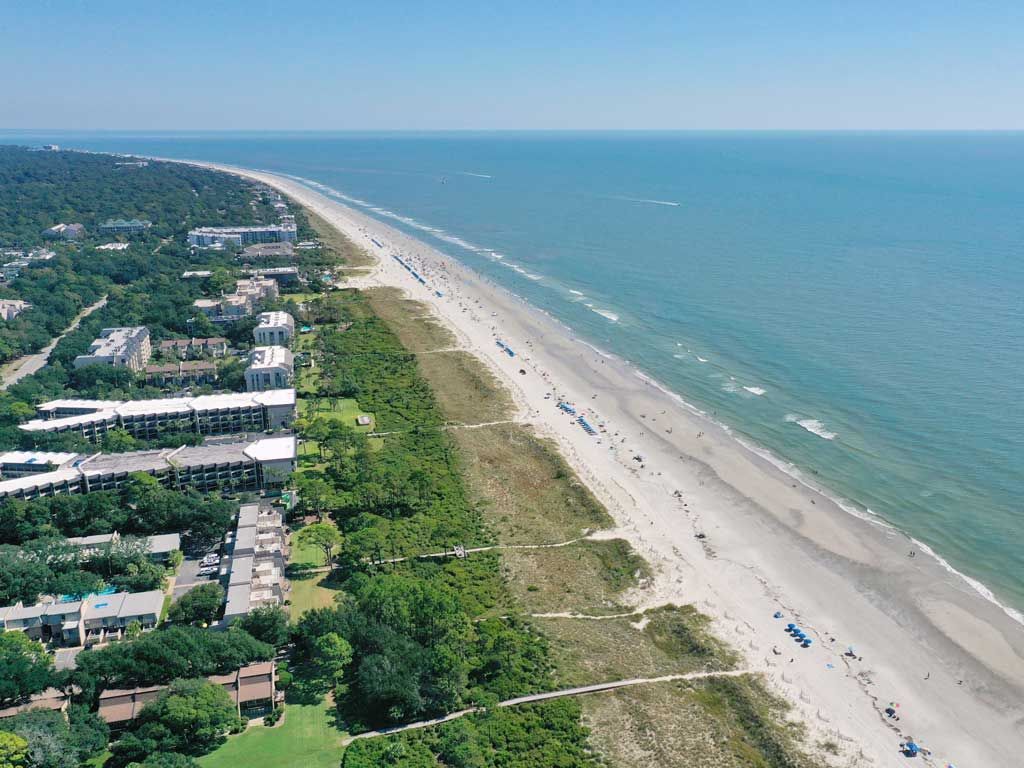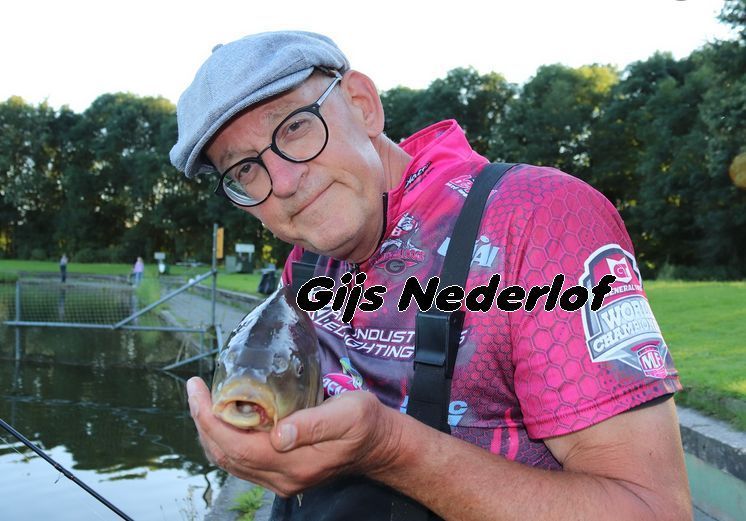Often overlooked in favor of bigger Bass species, White Bass can go under the radar. But we’re here to say that White Bass fishing is underrated. They may feed in large schools and cruise your favorite lake year-round, but that doesn’t mean they’re easy pickin’s. There’s a reason people call these fish “white lightning.” Blink, and they’re gone!
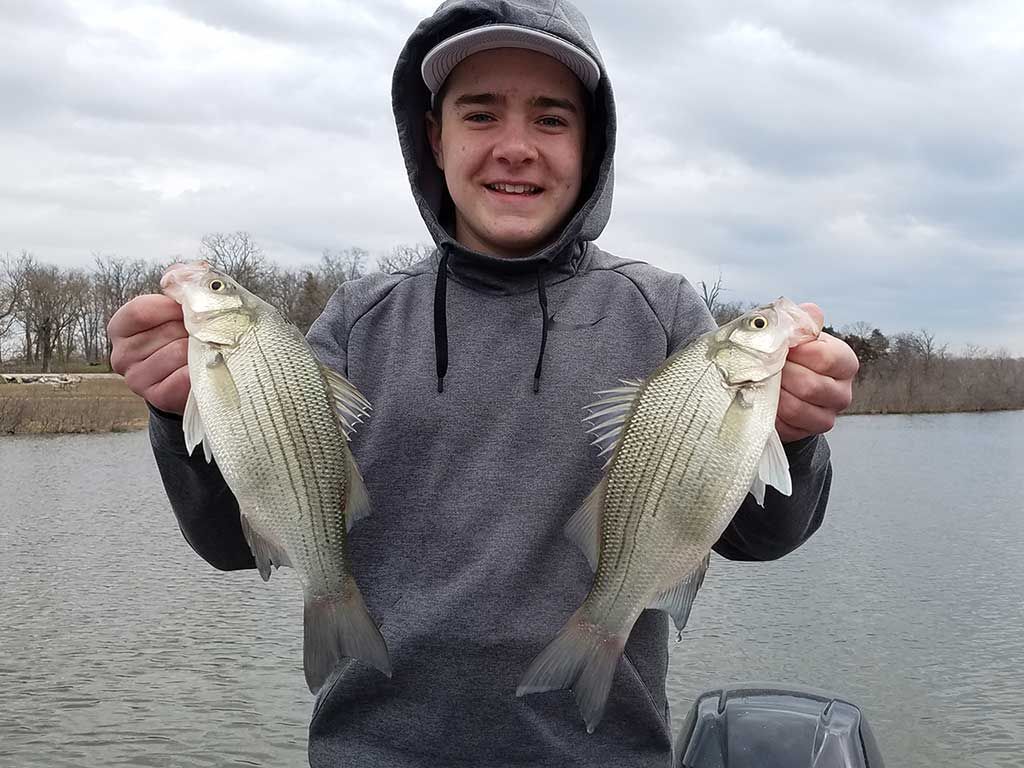
With so many ways to catch them and such hard little fighters at the end of your line, you’ll never grow tired of White Bass. You will be tired, though, from all those hookups…
How to Identify White Bass
Depending on the state, White Bass ( Morone chrysops ) also go by the names of Sand Bass and Silver Bass. Less commonly, they’re also called Barfish or Streaker due to the faint stripes on their bodies.
These fish belong to the temperate Bass family, which also includes Striped Bass, Hybrid Striped Bass, and White Perch. To the untrained eye, White Bass look a lot like their relatives, but don’t worry – we’ll help you learn the difference in a moment!
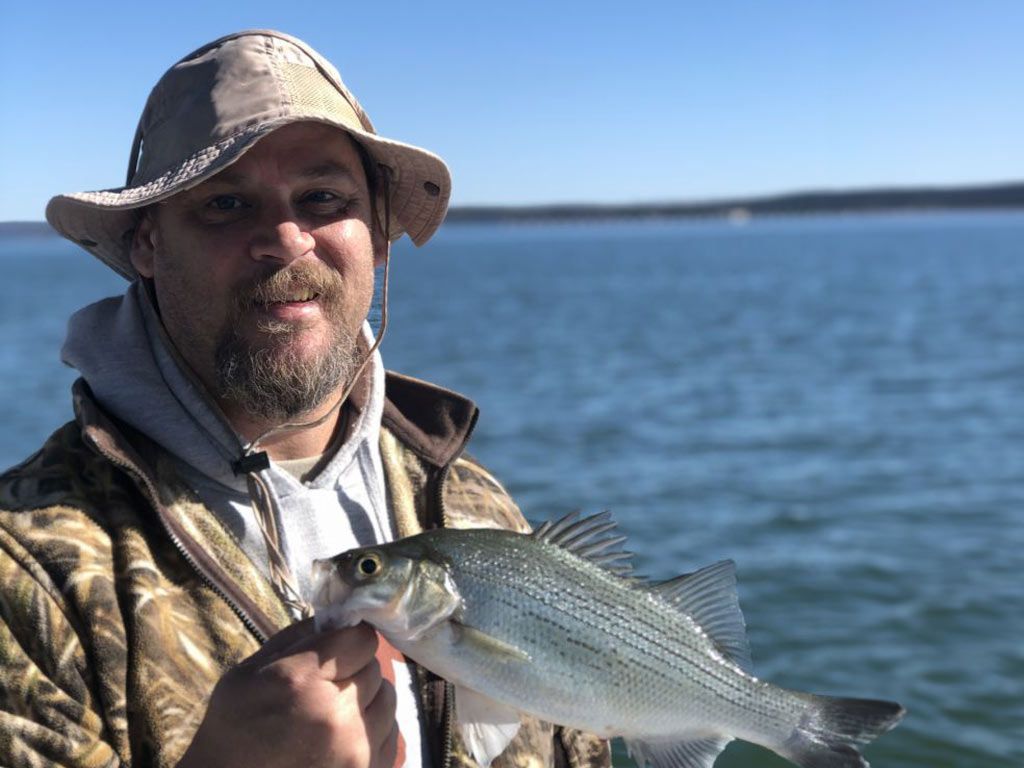
White Bass are native to large lakes and reservoirs in the central US. The Great Lakes, Ohio River, Mississippi River, and Red River drainage in Texas are a few significant places you’ll find them.
These fish typically grow between 10–15 inches and weigh anywhere from half a pound to 4 pounds , with most falling right in the middle. Due to their size, White Bass often get lumped together with Sunfish, Crappie, or Bluegill. But whereas these Panfish live in virtually every little pond, White Bass prefer clear lakes and reservoirs that run deeper than 10 feet. When they move upriver to spawn, the key is to locate them in moving water.
White Bass vs. Striped Bass
Of all the temperate Bass species, you’re least likely to confuse White Bass with Stripers ( Morone saxatilis ). For one thing, “Sandies” run much smaller in size. Compared to Striped Bass, they’re short and stocky.
Another clue is in the name itself. Striped Bass have dark, continuous stripes. White Bass also have stripes, but they’re relatively faint.
White Bass vs. Hybrid Striped Bass
As closely related species, White Bass and Striped Bass are able to mate. So, things get confusing once their babies enter the picture. Hybrid Striped Bass ( Morone saxatilis x M. chrysops ) started out as a cross between male Striped Bass and female White Bass, but mating in reverse also happens.

In some places, Hybrid Bass are also known as “Wipers.” You may even hear them referred to as Palmetto Bass (the product of a male White Bass and female Striped Bass), or Sunshine Bass (from a male Striped Bass and female White Bass).
Whatever you call them, these hybrids look a lot like mom and dad . Wipers grow a bit longer than White Bass, but not as long or lean as Stripers. Their stripes are dark like those on a Striper, but if you look closely you’ll see that these are bent or broken in places. The stripes on a Hybrid Bass almost resemble Morse Code!
Now’s a good time to mention yet another member of this family: Yellow Bass ( Morone mississippiensis ). Due to their dark, broken stripes, you’re most likely to confuse them with Hybrid Bass. But before you start banging your head against the wall, bear in mind that Yellow Bass are usually very small by comparison. And, as the name suggests, their scales have a yellow tint which sets them apart from everyone else in this black-and-white family picture.
White Bass vs. White Perch
Despite the name, White Perch ( Morone americana ) are in fact the final member of the temperate Bass family. And they probably look the most like White Bass. The biggest clue to look for are stripes. White Bass have faint stripes, while White Perch have none. You can sometimes see a difference in their tails as well: White Bass have deeply forked tails, while White Perch do not.
For a closer look at these two species, see our quick guide to the differences between White Perch and White Bass.
Best White Bass Fishing Spots
As we said, you won’t find Sandies swimming around any old pond. But they’re fairly widespread – and some states are positively riddled with them. Singling out the best spots in the country is no easy task, but here are a few recommendations:
Lake Erie
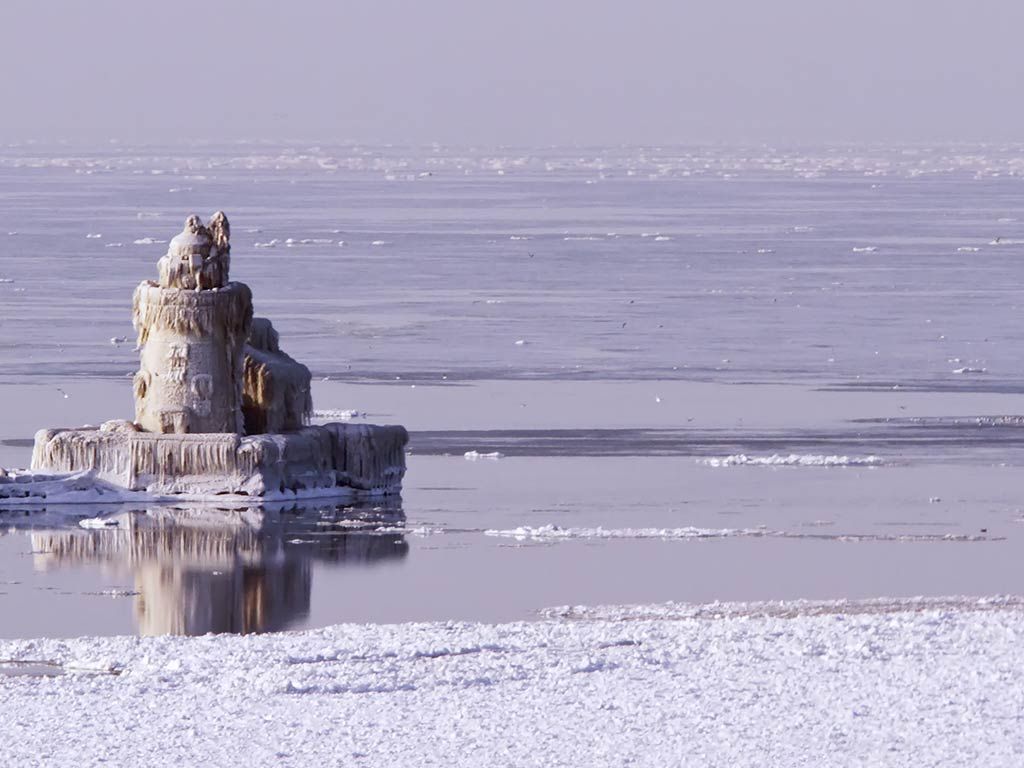
White Bass aren’t the most popular fish in Lake Erie but they may be its best-kept secret. In fact, some say this is the premiere White Bass fishery of the Midwest. While plenty of anglers are wise to the spawning run, few continue to target White Bass after spring. This is when you can take advantage! Around June or July, White Bass leave the tributaries and return to the open waters of Lake Erie, where fishing for them is still very good.
Wait for them at the tributary mouths of the western basin, or in the northwest corner of the lake where it meets the Detroit River. In other areas, you’ll find plenty of White Bass coming down the Maumee, Sandusky, Portage, and Huron Rivers. For reference, these rivers run past or through Toledo , Cedar Point, Port Clinton , and Gibraltar, respectively.
Since White Bass aren’t a top game fish in the area, there are no closed seasons or size limits for them in Lake Erie and most tributaries. Depending on what state you fish in, there may be a bag limit (usually an aggregate bag limit for White Bass plus Panfish and other non-game species).
Devils Lake, ND
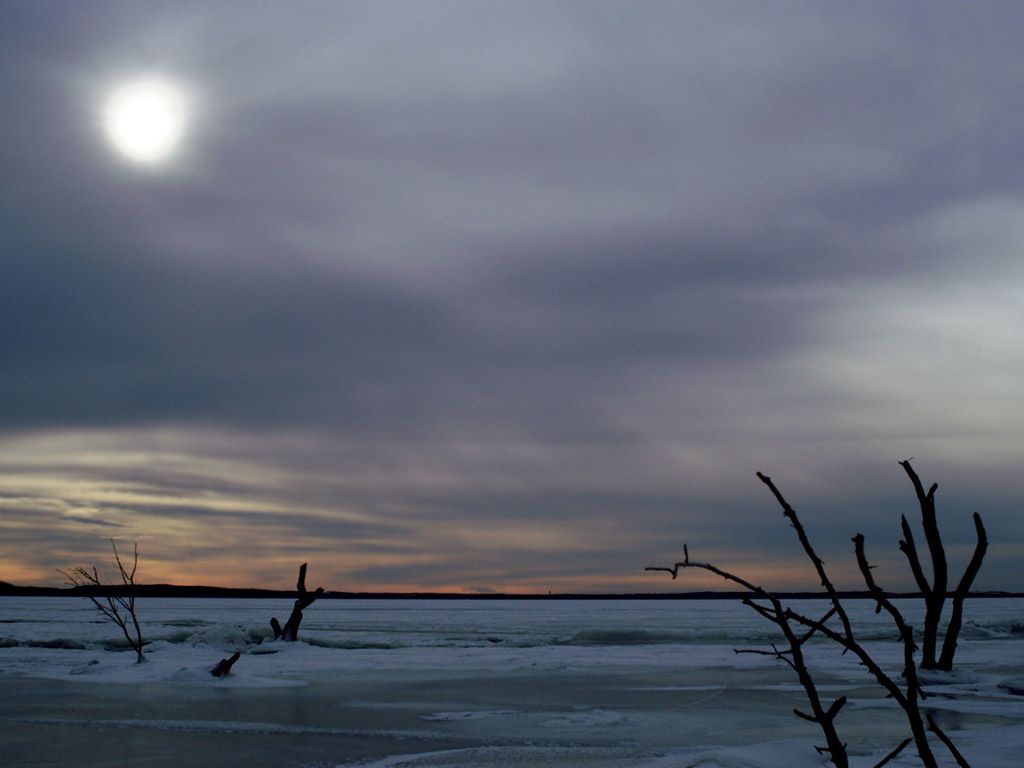
Move over, Lake Erie – Devils Lake has equally good White Bass fishing. And it’s not just the best in the Midwest. Some say it’s the best in the world! With local specimens regularly tipping the scale past 3 pounds, that may be true.
The best-known White Bass run takes place at the north end of the lake, up Channel A. As with other spring runs, it’s a short window of opportunity which depends on the water flow and temperature that year. By summer , however, these fish return to the main body of the lake and inhabit more predictable spots that a local guide can show you.
The season for White Bass is open year-round. North Dakota has a statewide daily bag limit of 20 White Bass with no size limit.
Winnebago Lakes, WI

Lake Winnebago – and the system of surrounding waters known as the Winnebago Pool – is an excellent habitat for White Bass. With so many rivers and creeks to follow, you can expect to keep busy during the spring when they spawn. Fishing Lake Winnebago in the summer is productive, too. And, don’t overlook the winter season, because ice fishing for White Bass is surprisingly hot!
The season for White Bass fishing on Lake Winnebago is open year-round, with no size or bag limits.
Lake Texoma, OK
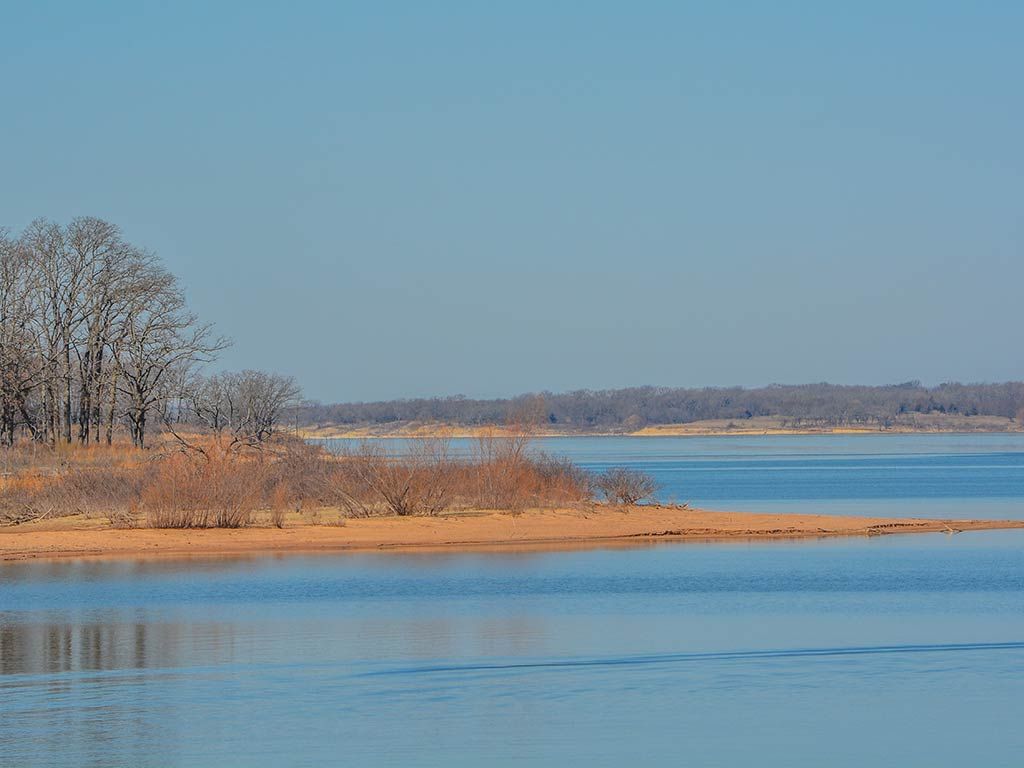
White Bass are the state fish of Oklahoma , so you know fishing for them is bound to be good here. You can catch Sandies all year-long in virtually any lake or river. But Lake Texoma on the border of Texas and Oklahoma is one that stands out from the crowd.
Primarily known for freshwater Stripers, the lake is also home to loads of White Bass. There are several low-head dams in the area which block the upstream migration of these fish when water levels are low. The result is that White Bass stack up downstream and become an easy target for anglers.
On Lake Texoma, there’s a daily bag limit of 25 White Bass , with no minimum size limit.
Lake Tawakoni, TX
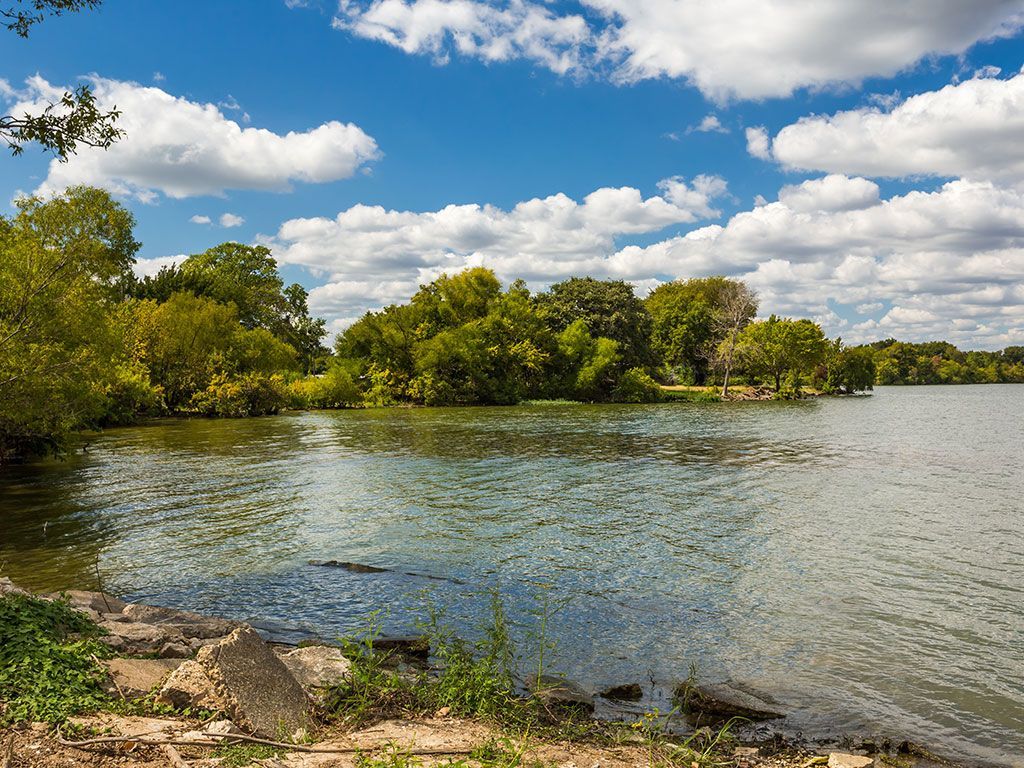
Anyone after Crappie, Catfish, or Largemouth Bass already knows Lake Tawakoni is a go-to destination. But fishing for temperate Bass in this lake is arguably even better! These fish are vital to the lake’s ecosystem and they absolutely thrive here.
White Bass fishing often picks up in February when they prepare to spawn in the creeks. By spring , Hybrid and Striped Bass are on the scene as well. All of these fish follow their preferred bait fish – shad. This leads them to different locations on a day-to-day basis, so if you don’t get a bite in one spot, be sure to move on.
On Lake Tawakoni, there’s a daily bag limit of 10 White Bass which must measure 10 inches or more.
How to Fish for White Bass
Several factors dictate where you should cast your line for White Bass, including bait fish patterns, water temperature, and the time of year.
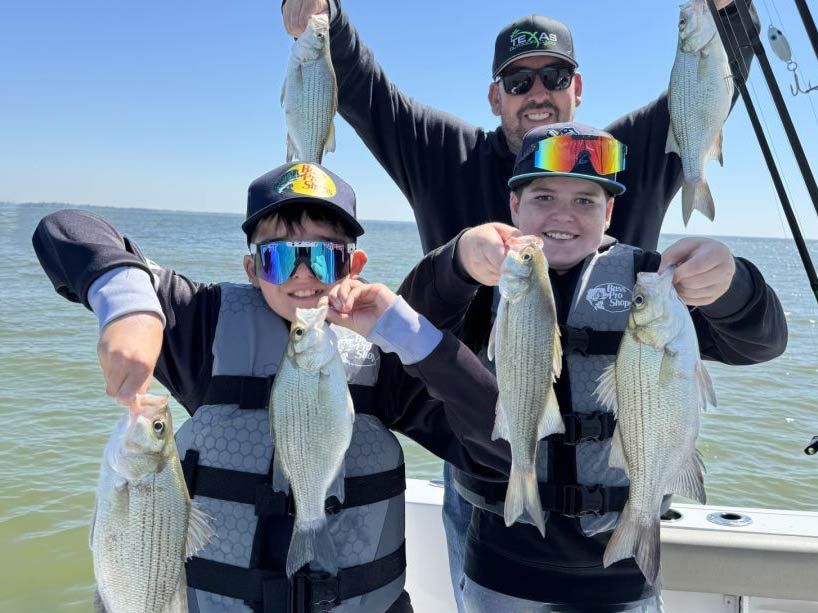
Come spring, White Bass spawn in moving water . Some of the best spots at this time are the mouths of tributaries, creeks, and rivers, since this is where you have an inflow of water into the main body of a lake. Early spring is a good time to troll the edges of major creek channels. As the fish continue upriver, target them along brushy banks and shoals.
Bear in mind that these fish won’t spawn until local waters approach 50 degrees. That usually happens between March and mid-April, but this obviously doesn’t run like clockwork.
Outside of the spawning season, you’re most likely to catch White Bass while boating on open water. The key is to understand local bait fish patterns, since White Bass will be hot on their tails. These fish favor shad i n particular, which spawn near structures like ripraps, rocks, and bridge pilings.
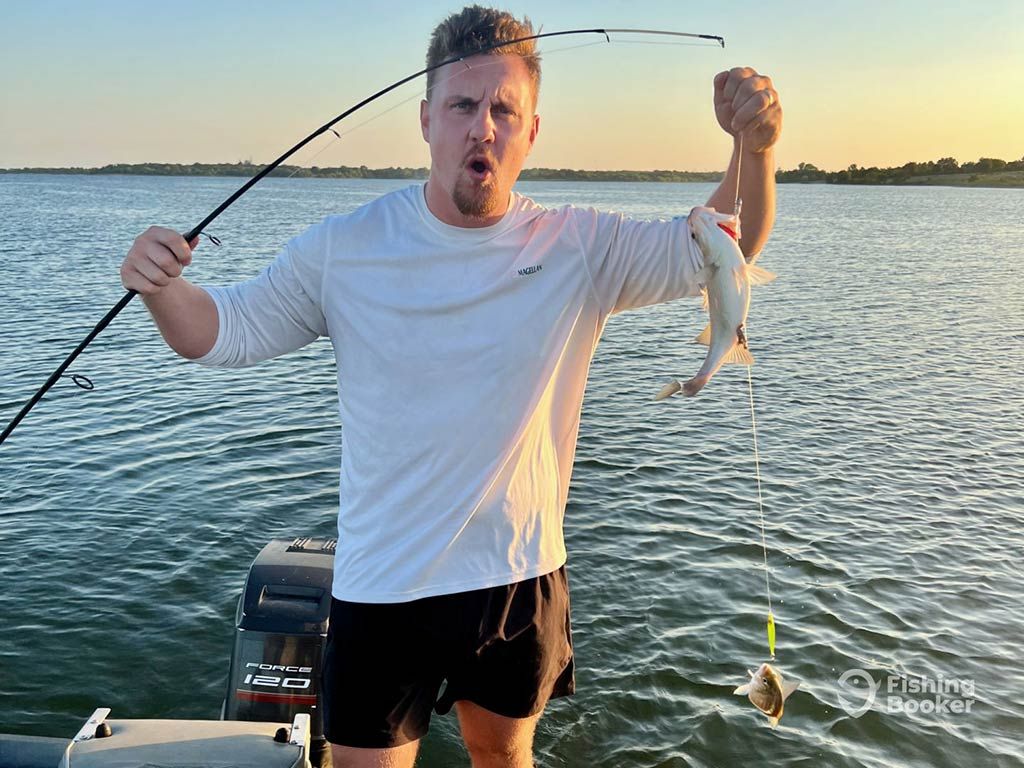
In summer, many bait fish move offshore to escape the heat. They’ll feed close to the surface in the morning and gradually move down the water column. At this time of year, trolling is effective. If you target White Bass while they’re feeding near the surface, you’ll often see them leaping right out of the water. Their loyal followers call this “the jump.” Jump fishing is a great chance to use topwaters, spoons, and fast-moving crankbaits. Otherwise, expect to troll for them somewhere between 10–20 feet down.
You can also catch White Bass by vertical jigging over deepwater flats and ledges. In this case, you should cast or let your line out directly under the boat so that your spoon or slab will fall to the lake bottom. Lift your rod several times and let the lure flutter back down, over and over again. The fish will usually bite as the lure is heading downward.
If you choose to target White Bass by simply casting some lures from shore or a boat, focus on a steady retrieve. Fly fishing is yet another option, usually using jig and bead-head flies.
White Bass Fishing Gear
Don’t be fooled by their puny size – White Bass are aggressive, muscular fish. They feed in large schools, often in a frenzy, so once you find one the bite is on. Rather than light tackle, you should opt for a 6–7′ medium spinning or baitcasting rod. Use a 6–12 lb braided line and a monofilament leader. Trolling pretty much calls for the same gear, though you might want to consider a slightly longer rod.
For fly fishing, choose a 4–7 wt rod . You should use sinking lines in lakes or reservoirs and opt for floating lines in rivers or creeks.
White Bass Bait & Lures
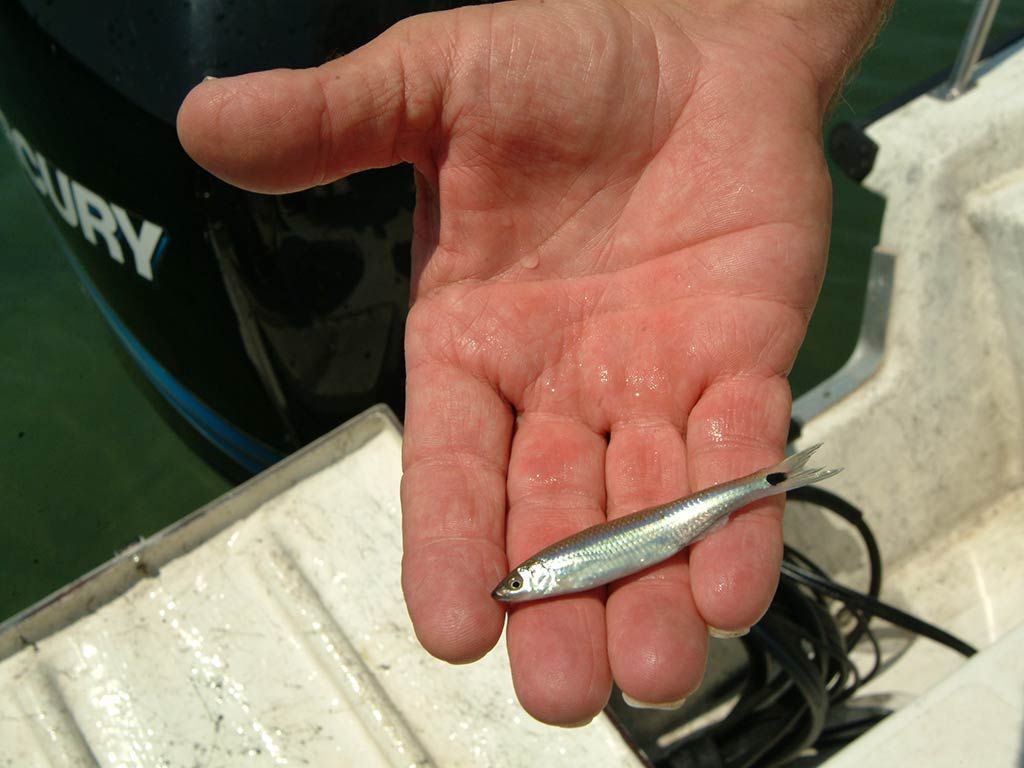
The number-one bait for White Bass is shad. Of course, they eat other critters, too. Additional bait choices are minnows, crayfish, nightcrawlers, red worms, crickets, and grasshoppers.
When fishing with artificials, you should choose lures that resemble shad or minnows whenever possible. You can use a wide variety of lures depending on the technique, and plenty of them are suitable for trolling as well as casting. Common choices are:
- Lipless and diving crankbaits
- Jerkbaits
- Swimbaits
- Spoons
- Slabs
- Inline spinners
- Curly tail grubs
- Jigs
- Topwater lures
Use white or silver lures when fishing in clear water. In murky water, opt for red or chartreuse . When jigging, one of the top recommendations is a marabou hair jig in white, yellow, or chartreuse.
The best flies for White Bass are finesse changers, clouser minnows, and woolly buggers in white, chartreuse, and shad patterns.
When to Fish for White Bass
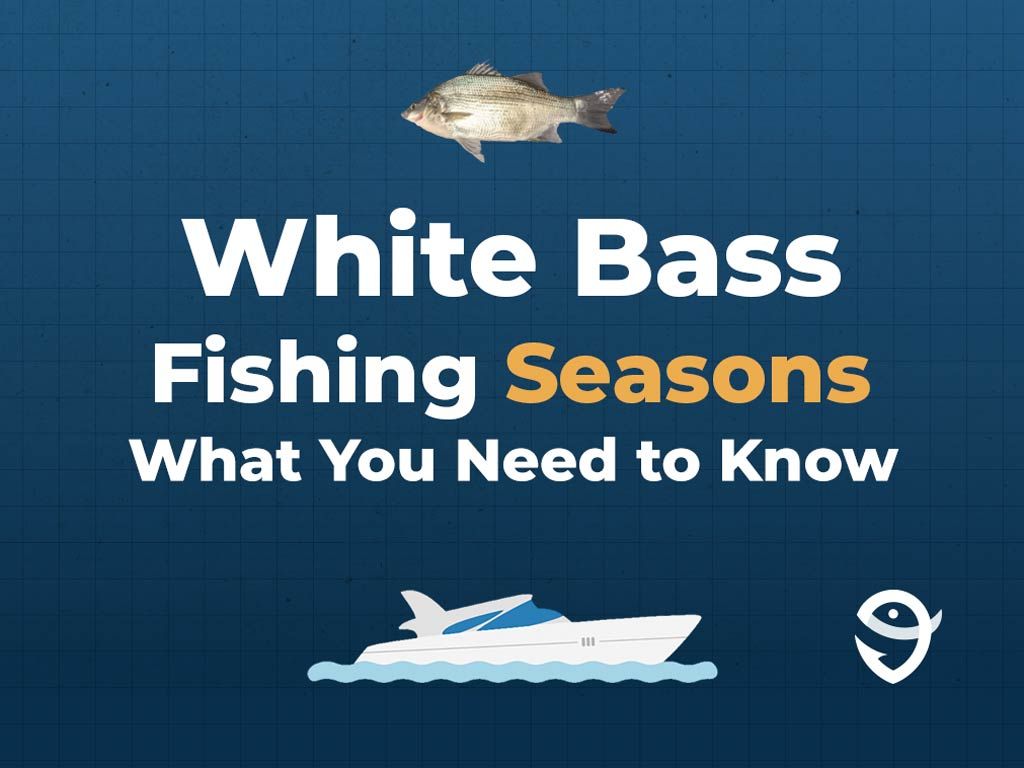
You can fish for White Bass year-round, but most anglers agree that early spring is the best. This period when the fish are spawning usually falls between March and mid-April or May , depending on the area. Water temperature is a much better indicator than the calendar, since White Bass won’t start moving into tributary streams until they reach the mid-50s.
While spring is a great time to fish near river mouths and further upstream, you can catch White Bass in other areas during the rest of the year – such as lakes, reservoirs, and the tailraces below dams. Dawn, dusk, and overcast weather are ideal times to target these fish. Ice fishing for them in winter can also be superb depending on the area.
White Bass: Time to Shine
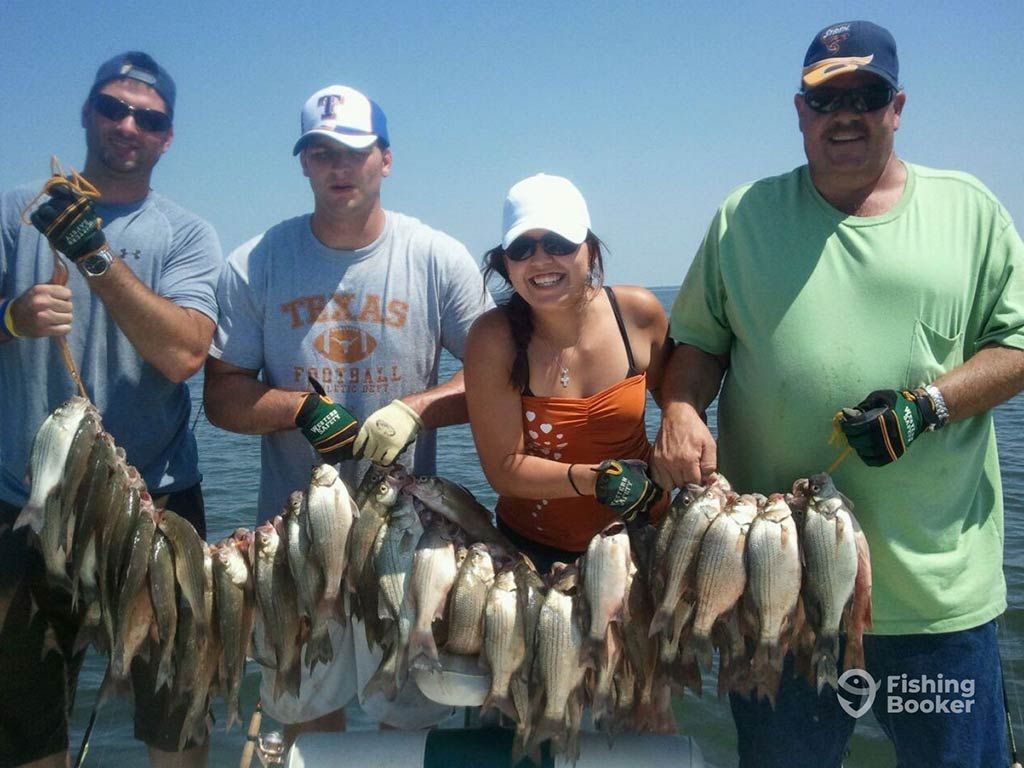
White Bass may be small, but don’t chuck your light tackle into the truck. These suckers pack a punch! Ferocious and known to feed in large numbers, they’re a great target for beginners and avid anglers alike. Whether you have a chance to chase ’em upriver or fish “the jump” in open water, you’ll soon understand why we think White Bass fishing is underrated.
Have you ever been fishing for White Bass? Where are your favorite spots? Any tips and tricks to share with us? We’d love to hear from you in the comments below!
The post How to Go Fishing for White Bass: The Complete Guide for 2025 appeared first on FishingBooker Blog.
